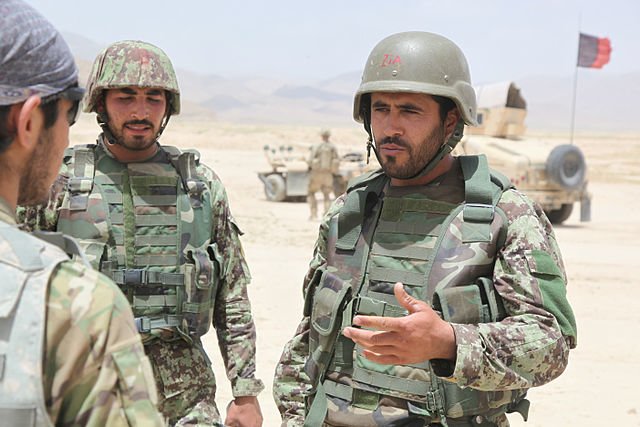
In 2016, after more than six years, Robert Ham finally welcomed his friend and former interpreter Saifullah Haqmal to San Antonio, Texas. Ham worked with congressional representatives and the State Department to bring the Haqmal family to the United States. Photo courtesy of Staff Sgt. Robert Ham via DVIDS.
The Biden administration is launching “Operation Allies Refuge” to eliminate the Special Immigrant Visa backlog and evacuate Afghan nationals who have aided the US military.
“At President Biden’s direction, the United States is launching Operation Allies Refuge to support relocation flights for interested and eligible Afghan nationals and their families who have supported the United States and our partners in Afghanistan and are in the [Special Immigrant Visa] application pipeline,” a senior administration official said in a statement to Fox News.
Details regarding the evacuation remain vague, including when it will begin and where the Afghan nationals will go. According to Fox News, a White House official cited “security purposes” as the reason for withholding details about the operation. However, there are indications that evacuation flights will begin at the end of July.

The Special Immigrant Visa process takes more than 800 days, on average. There are currently some 18,000 Afghans whose applications are stuck in a State Department backlog. The Association of Wartime Allies estimated the actual number of applicants looking for visas is around 71,000 when applicants’ family members are accounted for.
Matt Zeller, a member of the Association of Wartime Allies, told Coffee or Die Magazine that, without emergency action taken by either the executive or legislative branch of government, that number would take “an additional three years” to work through — even if staff worked on the task “24/7, full-time.”
While administration officials have yet to say where Afghan refugees will land, many experts say Guam is the most likely spot. In a June 12, 2021, letter to Biden, Guam’s governor, Lourdes Aflague Leon Guerrero, asked that the island be a landing point for refugees, much like after the Vietnam War.

“Guam has stood ready to serve as a safe and secure route for this type of humanitarian effort throughout our history. And today, it is no different,” Guerrero wrote. “Due to the urgency and gravity of this matter, I would like to speak with you soon.”
Additionally, the Association for Wartime Allies has worked out the cost of flying some 70,000 refugees to Guam. Zeller estimates that number would be roughly $9,981.65 per person, for a total cost of about $699 million.
“It sounds like a lot of money until you realize it’s an additional 8.3 hours of the DOD budget,” Zeller said. “But it’s a hell of a down payment in keeping Americans alive in future wars. Because this is how we’re going to show people that we keep our word.”

James Webb served as a US Marine infantryman from 2005 to 2010, completing a combat tour in Iraq. He’s worked as a freelance writer and photojournalist covering US troops in Afghanistan, and Webb spent more than two years in the US Senate as a military legislative assistant and as the personal representative of a member on the US Senate Foreign Relations Committee.
BRCC and Bad Moon Print Press team up for an exclusive, limited-edition T-shirt design!
BRCC partners with Team Room Design for an exclusive T-shirt release!
Thirty Seconds Out has partnered with BRCC for an exclusive shirt design invoking the God of Winter.
Lucas O'Hara of Grizzly Forge has teamed up with BRCC for a badass, exclusive Shirt Club T-shirt design featuring his most popular knife and tiomahawk.
Coffee or Die sits down with one of the graphic designers behind Black Rifle Coffee's signature look and vibe.
Biden will award the Medal of Honor to a Vietnam War Army helicopter pilot who risked his life to save a reconnaissance team from almost certain death.
Ever wonder how much Jack Mandaville would f*ck sh*t up if he went back in time? The American Revolution didn't even see him coming.
A nearly 200-year-old West Point time capsule that at first appeared to yield little more than dust contains hidden treasure, the US Military Academy said.












